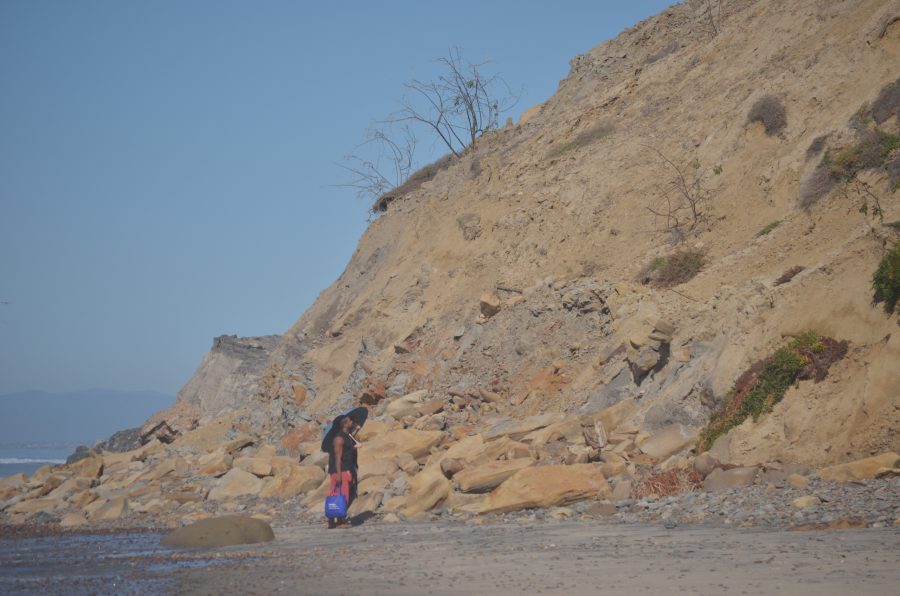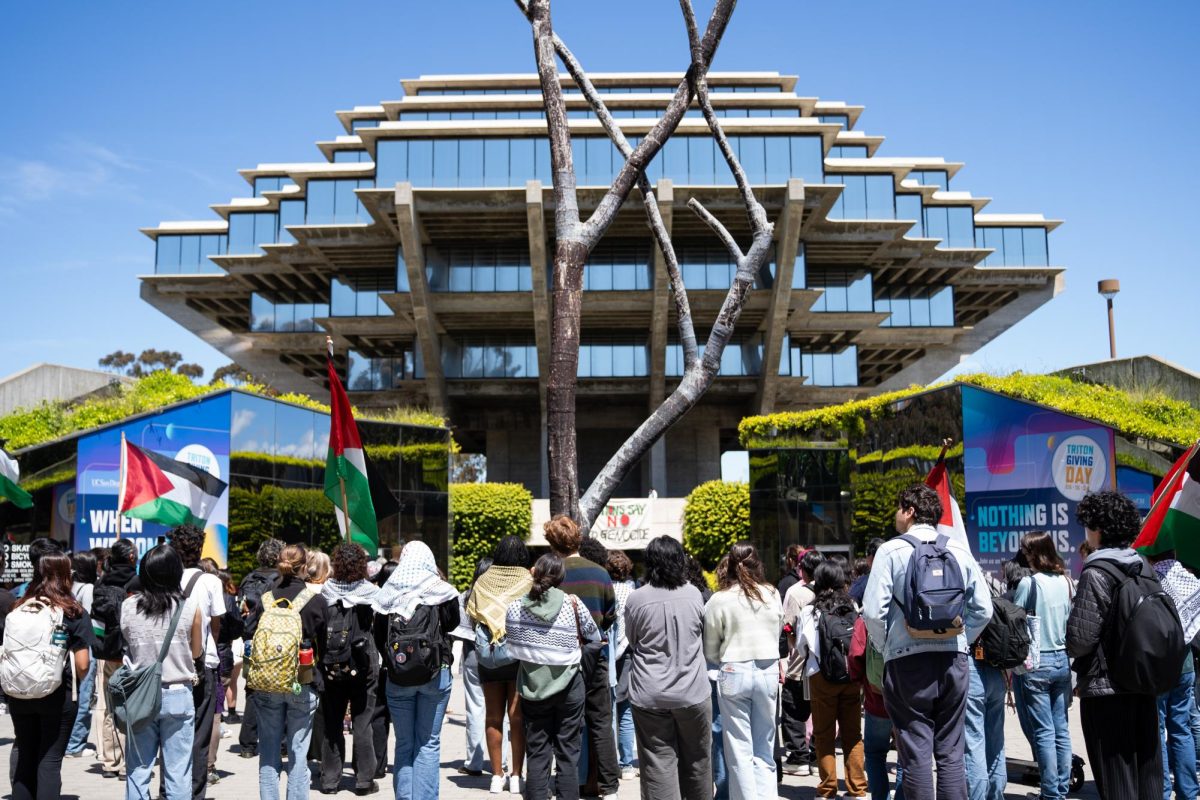Southern California recently experienced a Pacific storm categorized by heavy rainfall and flooding across the region during the first weeks of 2023, and San Diegans all across the County have felt its impacts.
The San Diego coastal region has been subject to extreme weather conditions from the storm’s passage. During the week of Jan. 9, a High Surf Advisory was issued for beach-goers, due to large waves that reached up to 20 feet and strong rip currents that could easily trap even experienced surfers. Additionally, a Small Craft Advisory for small boats was announced because of the imminent safety risks while operating such vehicles in harsh conditions. Despite warnings, there have been several rescue missions to save surfers from volatile waters; on the first Friday of January, rip current rescues were reported at La Jolla beaches near Windansea and La Jolla Cove, leading to crucial lifeguard intervention.
Such extreme weather conditions likely led to the collapse of a bluff south of Gliderport on the afternoon of Friday, Jan. 20. Videos from witnesses show the dramatic collapse creating an indent in the land below and an upward explosion of cliff rocks. In addition to this land impact, the bluff’s falling partitioned the coastal land that otherwise stretches from Torrey Pines State Beach to Black’s Beach, splitting the region in half. Such destruction was unprecedented to locals, with witnesses at the beach reporting that the collapse occurred gradually. Currently, witnesses report that the bluff still looks like it is shifting downwards; onlookers observe that some of the perched bluff’s regions look like they could fall at any time.
Though the exact cause of the bluff’s collapse is not yet confirmed, various geological teams have been sent to the destruction site to determine the necessary precautions to keep the area safe. One geologist for the City of San Diego, Mike Jensen, hypothesizes that the intense rain coming onto the cliff during the storm weighed the landform down as large incoming waves crashed into the cliff. Because the slide has not yet become stagnant, experts advise beachgoers to stay away from the bluff’s bottom.
The La Jolla area is not the only beach region that was affected by the storm. Large waves reaching up to 12 feet caused damage to the Ocean Beach Pier during the first week of January — a region that faced prior damage in 2022 due to high surf. In addition to high waves, the area experienced some flooding, as high tides flooded blocked-off areas and residential roads alongside the coast. Other public beach areas in San Diego that reported high wave and flooding dangers included Imperial Beach and Mission Beach.
The recent back-to-back storms have caused an influx in San Diego’s greenery, but not without its dangers. The January showers and strong winds have caused massive mountain snow, flooded roadways, power outages, and wildlife destruction. Mass flooding was reported during the week of Jan. 16 along the San Diego River, encompassing the Fashion Valley and Mission Valley areas. Along with the river, residential roads and heavy-traffic roads such as Fashion Valley Road, Camino De La Reina, Mission Center Road, and others have been struck by the floods.
Though wind and flood advisory warnings were issued by forecasters, there have been at least two water rescues during the storm season from vehicles being trapped in the rising flows. Additionally, San Diego Fire-Rescue Lifeguards aided a group of seven individuals who became stuck on a piece of land and volatile waters near the Interstate 5 and I-8 freeways. Though fire-rescue lifeguards were able to rescue five individuals, the two remaining were saved by boat. Additionally, in Southern San Diego County, residents and onlookers reported flooding along the Tijuana River, trapping a driver’s vehicle in four feet of water, requiring water rescue crew intervention using a life raft.
Though record amounts of rainfall were seen throughout California, such high surf conditions are not exclusively seen during rainstorms.
San Diego State University’s Department of Geological Sciences Professor Pat Abbott explained the connection to storms of this magnitude with winter. “There is a higher sea level than there used to be, but not that much. The main thing we are seeing right now is the seasonal change,” Abbott said. “Come wintertime, we get bigger waves, less sand on the beach, and we get the highest tides of the year.”
Such diminishing sand levels coupled with problematic weather conditions are affecting the beach environment, and Abbott said that such an issue will lead to ocean levels rising and thus further impact coastal land. As of now, no more major storms are projected to hit the San Diego region. Looking at next month, the extreme weather conditions seen during the Pacific Storm are flattening out, with only minimal showers and cool temperatures forecasted throughout the first week of February and no special weather advisories.
Photo by Amanda Parmele for The UCSD Guardian.























medital • Feb 4, 2023 at 7:16 pm
your post is usefully